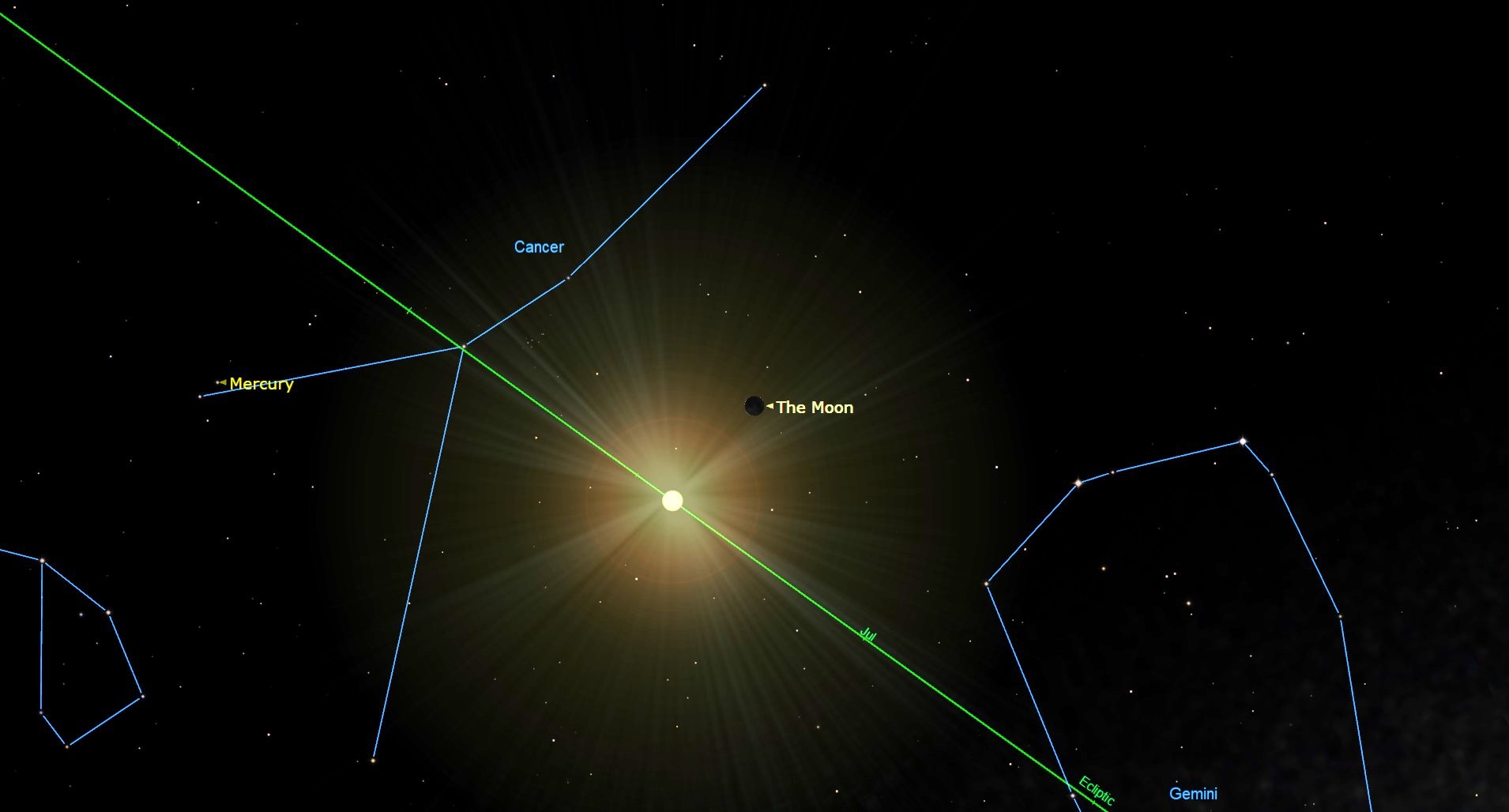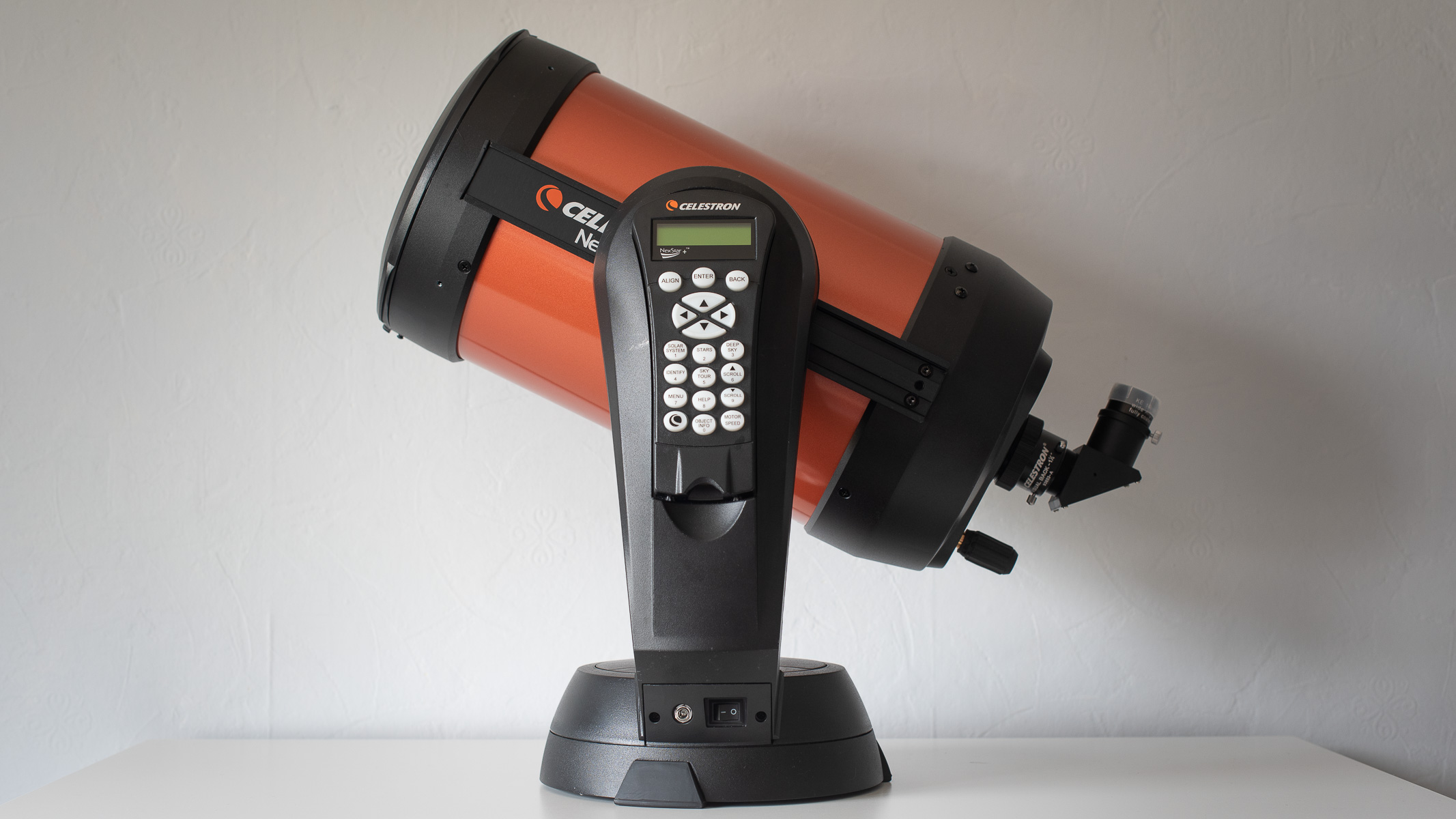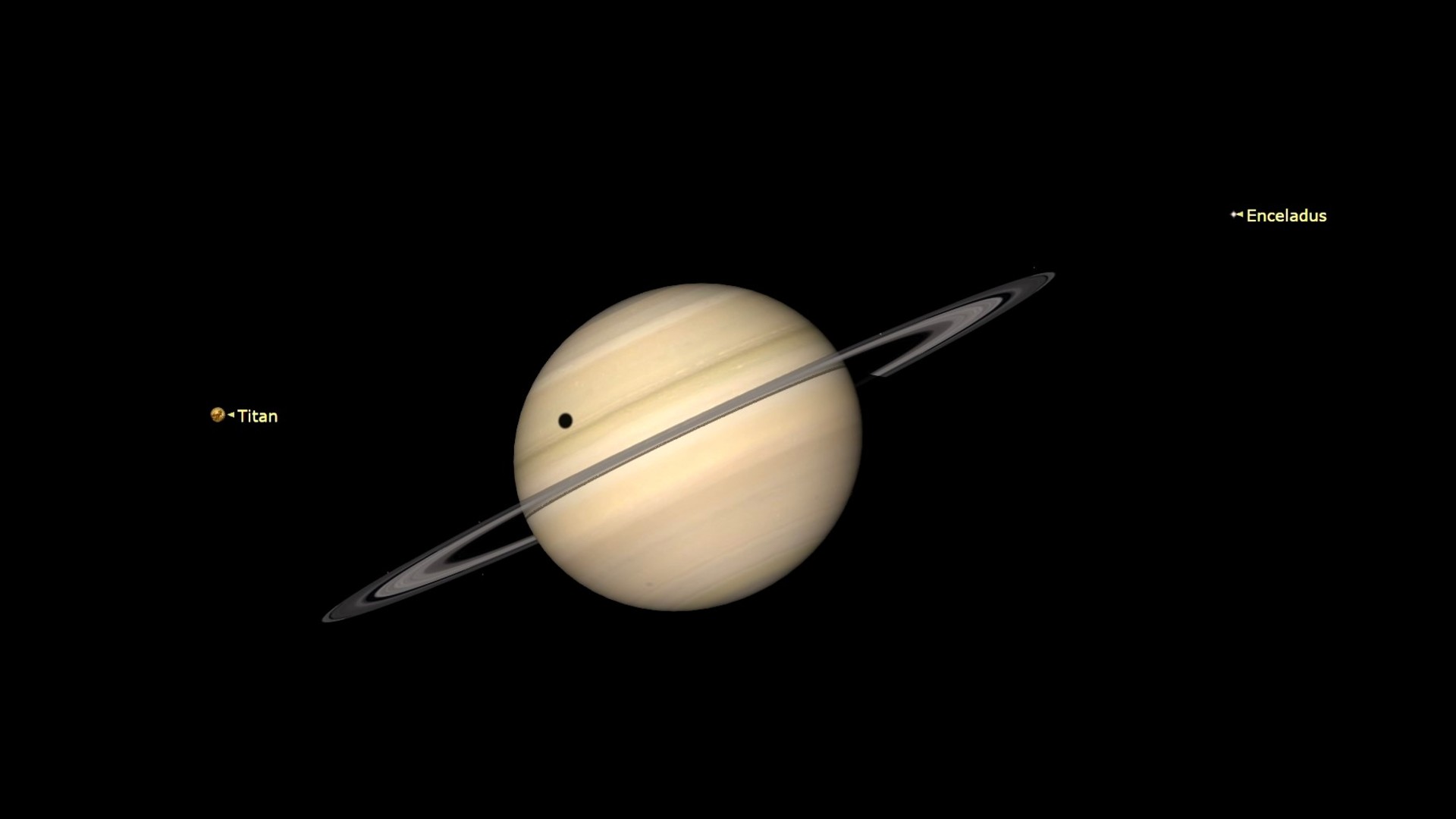New moon of July 2025 sees Saturn swim with the fishes tonight
Saturn will be quite distinct in the Pisces constellation.

The new moon arrives on July 24, a day after the moon and Jupiter make a close pass in the dawn sky.
The exact timing of the new moon phase happens at 3:11 p.m. Eastern Time (1911 UTC), according to the U.S. Naval Observatory. The new phase of the moon is called that because in many lunar calendar systems, it marks the start of the month. At that time, the sun and moon are in conjunction, meaning they share the same celestial longitude. Unless there is a solar eclipse, the moon itself isn't visible since it is so close to the sun and the illuminated side is facing away from Earth. (The next partial solar eclipse is due in September, and will be visible in the Southern Hemisphere).
The time of a given Lunar phase is measured by where the moon is relative to the Earth, which means any differences are because of one's time zone. For example, the new moon is at 8:11 p.m. in London, 9:11 p.m. in Paris, and 5:11 a.m. July 25 in Beijing.
Visible Planets

Want to see the visible planets up close? The Celestron NexStar 8SE is ideal for beginners wanting quality, reliable and quick views of celestial objects. For a more in-depth look at our Celestron NexStar 8SE review.
For mid-northern latitudes, Mercury will be in the evening sky July 24 but lost in the glare of the sun; the planet sets soon after the sun does – in New York sunset is at 8:19 p.m. and Mercury sets at 8:30 p.m.; the sky background will be too bright to see the planet.
Mars will be low in the southwest on July 24; in New York Mars sets at 10:32 p.m. By 9 p.m. the sky is getting darker and Mars is about 16 degrees high. It will still be a bit hard to spot as the sky will be relatively light – civil twilight ends at 8:50 p.m. Eastern – but the reddish color will help distinguish it from other objects and stars.
Saturn is the first planet to rise after Mars sets, at 10:56 p.m. on July 24 in New York City. As the planet is in the constellation Pisces, it will be quite distinct in its region of sky as Pisces is fainter and hard to see from city locations. As the sky starts to lighten by about 4:30 to 5:00 a.m. (the morning of July 25) it will be about 37 degrees above the south-southeastern horizon.
Following Saturn is Venus, rising in New York at 2:51 a.m. on July 25. Venus is in Taurus, and so bright that it is immediately identifiable; it will look like the brightest "star" in the sky. By about 4:30 a.m. it is prominent in the east-northeast, though still low in the sky at about 17 degrees in altitude.
Breaking space news, the latest updates on rocket launches, skywatching events and more!
Jupiter rises at 3:58 a.m. EDT in New York. Jupiter is in Gemini, though the constellation itself will be harder to see as the planet rises so close to sunrise (5:46 a.m.). Jupiter will appear to the left and below Venus.

In the Southern Hemisphere, for example in Melbourne, Australia, (where the new moon is on July 25 at 5:11 a.m.) it is winter, and the sun sets early; at 5:27 p.m. on the evening of July 25; civil twilight ends at 5:55 p.m. so by about 6:30 p.m. the sky is dark enough to see the stars. Mars will be in the northwest about 32 degrees high at that point, in the constellation Leo near the Lion's tail (appearing to be between Leo and Virgo). Mars sets at 9:31 p.m.
Saturn rises in Melbourne at 10:09 p.m. and will be in the east; if it is a dark sky location one can see a "circlet" of Pisces (one of the Fish) to the left of the planet as it rises. The planet transits at 4:16 a.m., and it will be 53 degrees high in the northern sky.
Venus rises in Melbourne at 4:46 a.m. July 26, and as sunrise isn't until 7:25 a.m. it will have a chance to get quite high in the northeast before it fades from view in the dawn light; by 7 a.m. the planet will still look like the "morning star" and be 20 degrees above the horizon.
Jupiter rises last, at 6:03 a.m. local time in Melbourne, and won't be as easy to spot as Venus but if one has an unobstructed horizon (for example one is looking out over a plain or the ocean) one will see Jupiter about 4 degrees high forming a triangle with Jupiter, Venus and Aldebaran being the bottom and making a line up and to the left, with Betelgeuse as the top point above and to the right of Venus.
Summer Stars
For Northern Hemisphere sky watchers, by about 10 p.m. the Summer Triangle is high in the eastern sky; the "top" star is Vega, the brightest star in Lyra the Lyre, and it is about 74 degrees above the horizon. By about 11:30 p.m. local time (in most mid-northern latitude locations) Vega is almost directly overhead, within a few degrees of the zenith from the continental United States. The other two stars in the Summer triangle are Deneb and Altair, both of which are east (to the left) of Vega; Deneb is the more northerly of the two and higher in the sky. From a dark sky site one can see the Milky Way inside the Triangle.
Deneb is the tail of Cygnus the Swan –its name is from the Arabic word for tail, dhaneb — and also contains an asterism called the Northern Cross. Cygnus has been associated with more than one legendary swan – one is the form Zeus took to seduce Leda (mother of the twins represented by Gemini) and the other is the form Orpheus was given after being murdered, with the constellation [placed in the sky near Lyra, his Lyre. Chinese astronomers saw Cygnus as the "Black Tortoise of the North."

Turning left – towards the north one will see the Big Dipper to the left (in the northwest) part of the sky. The Big Dipper is an asterism that is part of the Ursa Major, the Great Bear; the end of the Dipper's handle is in the Bear's tail. Following the "pointers" (the two stars in the front of the bowl of the Dipper, called Dubhe and Merak) one can make a line to the left to find Polaris, the Pole Star and the end of the tail for Ursa Minor, the Little Bear, also called the Little Dipper.
Continuing straight across one encounter Cepheus, the king, and just below Cepheus is the "W" shape of Cassiopeia, the Queen (Cepheus' wife) which will be a bit lower in the northeast.
Going back to the Dipper, follow the handle of the big dipper and "arc to Arcturus" the brightest star in Boötes, the herdsman, and continuing downward you hit Spica, the brightest star in Virgo. If you stay at Boötes, and look left of Arcturus and a bit up, one can see a circlet of stars anchored by a brighter one in the middle of the arc; this is Corona Boreallis, the Northern Crown.
Turning south, putting the Big Dipper and Polaris behind you, one sees the bright red star Antares, the heart of Scorpius, and in darker sky locations looking up (north) from Scorpio one sees Ophiuchus the healer, with Sagittarius and its "teapot" shape to the left of Scorpius.
In the mid-southern latitudes one sees the stars of winter. – darkness comes earlier. By 7 p.m. at the latitude of Buenos Aires, Melbourne or Cape Town, the sky is dark and Crux, the Southern Cross is high above the southern horizon, about 60 degrees. To the left of the Cross (east) is Hadar, the second brightest star in Centaurus, the Centaur, and to the left of that is Alpha Centauri, also called Rigil Kentaurus, our nearest stellar neighbor.
Centaurus is a constellation associated with Chiron, who according to legend was Hercules' tutor. Looking east one sees Scorpius, though upside-down (from the point of view of a Northern Hemisphere observer) with its brightest star Antares very high in the sky; a full 60 degrees in altitude. If one looks straight downward from Scorpius one encounters the teapot shape of stars that is Sagittarius; in mid southern latitudes the teapot shape is almost vertical.
Towards the southwest, looking downwards from the Southern Cross is a large circle of seven to eight stars (depending on how dark your local sky is, given city lights) which is Vela, the Ship's Sail. Below Vela is the ship's keel, Carina, setting and marked by Canopus, about 11 degrees above the southwestern horizon. Canopus is the second-brightest star in the night sky after Sirius. Vela and Carina are parts of what was once a giant constellation called Argo, the ship of Jason.

Jesse Emspak is a freelance journalist who has contributed to several publications, including Space.com, Scientific American, New Scientist, Smithsonian.com and Undark. He focuses on physics and cool technologies but has been known to write about the odder stories of human health and science as it relates to culture. Jesse has a Master of Arts from the University of California, Berkeley School of Journalism, and a Bachelor of Arts from the University of Rochester. Jesse spent years covering finance and cut his teeth at local newspapers, working local politics and police beats. Jesse likes to stay active and holds a fourth degree black belt in Karate, which just means he now knows how much he has to learn and the importance of good teaching.
You must confirm your public display name before commenting
Please logout and then login again, you will then be prompted to enter your display name.
